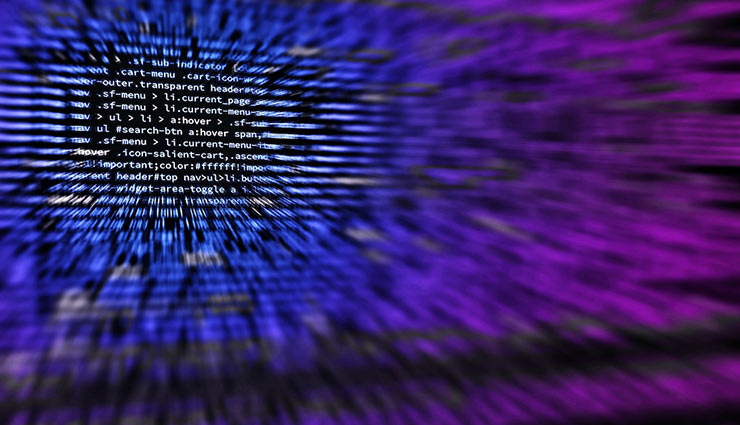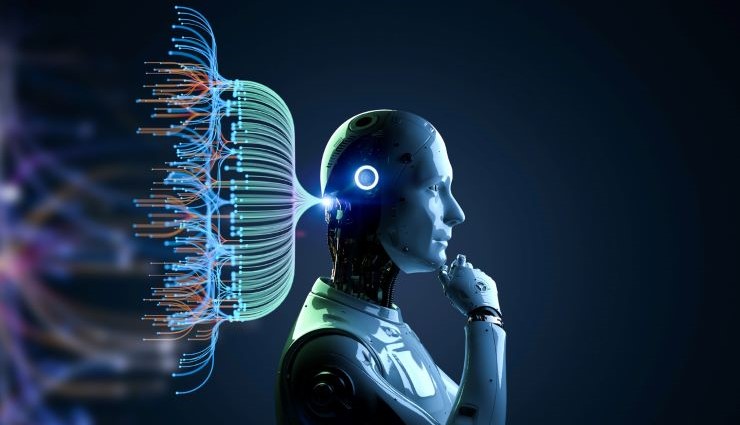The more we move forward, the more critical artificial intelligence is in the world, and this knowledge’s role in our present and future life become more muscular. Artificial intelligence is the cornerstone of modern science called “deep learning,” or deep learning, which has emerged to make various things brighter. If this is the first time you have heard the name of this science or you don’t know much about it, read this article to the end. In the following, we describe deep learning and examine its various aspects.
What is deep learning?
Deep learning is a sub-branch of machine learning. Deep learning works with artificial neural networks that mimic humans’ thinking and learning. This field attempts to automatically analyze and predict similar results by examining extensive input data. Every deep learning algorithm performs the same task repeatedly and tweaks it a little each time to improve the final result. Many services and applications today use this technology. Deep learning is used in digital assistants, voice-enabled TV remotes, credit card fraud detection, and emerging technologies (such as self-driving cars).
What is the difference between neural networks and deep learning?
The difference between neural networks and deep learning is that neural networks are the basis of deep understanding to simulate how the human nervous system works. Neural networks are layers of nodes, Just like the human brain, which comprises neurons. The more layers a network has, the deeper it is. Each neuron receives thousands of signals from other neurons in the human brain. In the artificial neural network, the signals between the nodes determine the movement and the corresponding weights. A node with more weight will influence the next layer of nodes more. The final layer aggregates the weighted inputs to produce the output.
Since deep learning systems have a large amount of data being processed and include complex mathematical calculations, they need powerful hardware. Of course, even with advanced hardware, training a neural network can take weeks.
Deep learning algorithms can receive and process unstructured data such as text and images and extract their features automatically, thus eliminating the dependence on human experts to some extent. For example, let’s say we have a collection of photos of different pets, and we want to sort them by ” cat, “dog,” “hamster,” etc. Deep learning algorithms can determine which features (such as ears) are most important for distinguishing each animal from another. In machine learning, this manual work is done by human experts.
The application of deep learning in today’s life

Deep learning applications have become an essential part of our daily life. In most cases, these applications are so well integrated with products and services that users are unaware of the complex data processing in the background. We have reviewed some of the applications of deep learning below.
1. entertainment
Companies such as Netflix, Amazon, YouTube, and Spotify offer movies, songs, and videos related to the user’s search and taste to improve their customers’ experience. Based on a person’s search history, interest, and behavior, streaming media companies make recommendations to help select products and services. Deep learning techniques also add sound to silent movies and generate automatic subtitles.
2. Virtual assistants
Cortana, Siri, and Google Assistant are examples of virtual assistants that use deep learning technology. Every time a command is given to the virtual assistant, it provides a better user experience based on past experiences using deep learning algorithms.
3. chapatti
A chatbot is an artificial intelligence program for an online chat via text or text-to-speech. This program can communicate and perform human-like actions and is used for customer interaction, marketing, and instant messaging. Chatbots like GPT chat provide automated responses to the user. They use machine learning and deep learning algorithms to generate different types of reactions to user messages.
4. Translation
Machine translation has attracted a lot of attention from technology businesses. This investment and recent advances in deep learning have led to a significant increase in translation quality. According to Google, the move to deep understanding has resulted in a 60% increase in translation accuracy compared to the previous phrase-based strategy in Google Translate. With near-human accuracy, Google and Microsoft can now translate more than 100 languages into other languages.
Deep learning training
Since artificial intelligence is considered one of the most critical technologies in the world today, its sub-branches have gained many supporters, and many people are eager to work in this field. On the other hand, the lack of specialized and skilled personnel in this field has caused people who can acquire high expertise and skills to be secure in jobs and income in artificial intelligence and deep learning. Today, when artificial intelligence and deep learning have become important and popular topics, you can find many training courses. If you are a programmer, you can improve your knowledge and skills by taking in-depth learning courses and becoming a professional expert in this field to change and enhance millions of people’s lives.
Common questions
1. What is the most crucial advantage of deep learning?
If deep learning models are well-trained, they can produce the highest quality and most accurate output possible in the shortest time. While a human force must spend a lot of time and energy to do the same work, and the result may not be of acceptable quality due to lack of concentration and fatigue.
2. Does deep learning have any disadvantages?
Yes! One of the most significant disadvantages of deep learning is that by replacing intelligent systems instead of human forces, many job opportunities will be lost, and unemployment and poverty will increase.
3. What is the difference between deep learning and machine learning?
Deep learning is a subset of machine learning. Machine learning algorithms are linear, but deep learning algorithms are placed in an increasing complexity and abstraction hierarchy. Machine learning requires an expert to identify valuable features. The programmer must tell the computer what to look for to decide whether, for example, a dog is in a picture. This laborious process is called feature extraction. The computer’s success in machine learning depends entirely on the programmer’s ability to define the feature set for the dog accurately. In deep learning, the program creates its own set of unsupervised features. Deep learning learns these features incrementally, thus eliminating the need for an expert and supervision. Unsupervised learning is not only faster but also usually more accurate.
4. What is the difference between deep learning and artificial intelligence?
Deep learning is a subset of machine learning, and machine learning is a subset of artificial intelligence. Deep learning is a type of artificial intelligence.
5. What are deep learning programming languages?
Deep learning programmers use different programming languages depending on other projects. Python, Java, R programming language, and MATLAB programming language are among the most common deep-learning programming languages.
final word
Facing artificial intelligence and deep learning is very interesting for all of us. The fact that YouTube and Instagram offer us the kind of content we are interested in excites us all. Advances in technology make life easier and more interesting day by day, but this is interesting and good until technology and robots do not replace humans. What is your opinion? Write in the comments section.



